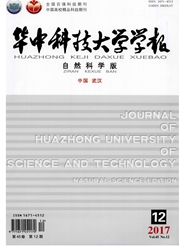

 中文摘要:
中文摘要:
针对垂直轴水轮机流固耦合问题,采用均布力法和插值法相结合的单向流固耦合方法,在不同速比的工况下,分析叶片应力、水轮机整体应力、位移以及应变的变化规律,得出垂直轴水轮机在旋转过程中最危险工作方位角及其随速比变化的规律.结果表明:在一定速比下,当水轮机转到某一方位角时,叶轮受合力最大,此方位角为最危险工况;最危险方位角随着速比增大而增大,并逐渐接近叶片弦线与来流速度方向垂直的位置即90°;基于均布力法和插值法对水轮机叶片进行单向流固耦合分析,可以得到相同变化规律,在数值上均布力法更趋于保守.
 英文摘要:
英文摘要:
As for vertical axis turbine fluid-structure interaction problems, using one-way FSI method, combined with uniform force and interpolation method, the stress distribution of the blade, the stress distribution, displacement and the deformation of VAWT (vertical axis water turbine) were analyzed. The most danger state of the VAWT when it is rotating and the changing law with TSR (tipspeed ratio) were given. The results show that under a certain TSR, azimuth angle is the most dangerous working condition when the impeller by the resultant force is the largest. The most dangerous azimuth increases as the TSR, and gradually approaching the place where the blade chord line and the velocity direction is perpendicular, that is 90°. The uniform force and interpolation method are used to analyze one-way FSI (fluid-solid interaction) of blades, which can get the same change law, and uni- form force method tends to be more conservative.
 同期刊论文项目
同期刊论文项目
 同项目期刊论文
同项目期刊论文
 期刊信息
期刊信息
